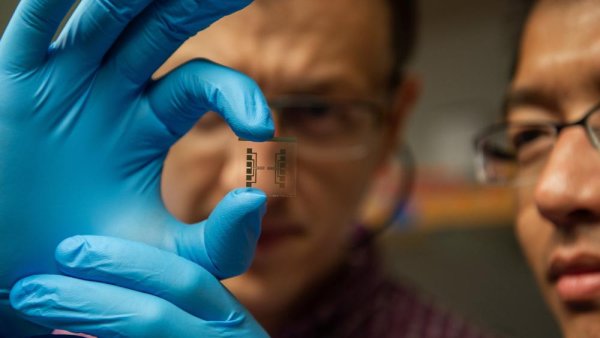Cervone named to inaugural cohort of AGU Local Science Partners program
| psu.edu
The American Geophysical Union (AGU) has named Guido Cervone, professor of geography, meteorology and atmospheric science and associate director of the Institute for Computational and Data Sciences at Penn State, to the inaugural cohort of the organization’s Local Science Partners program. Cervone is one of 55 AGU members from across the United States who will take part in science policy and communication workshops and travel to Washington, D.C., to build sustainable relationships with their legislators and champion policies that benefit the environment and humanity.
Pa. waited more than 2 years to test wells after finding nearby contamination. Now this neighborhood wants answers.
| witf.org
Affected homeowners in Benner Township, Centre County, want to know when and how PFAS chemicals got into their water. State officials defend the delay, pointing to “sound scientific practices.”
Bridging the gap to better infrastructure
| psu.edu
Bridge failures are a reality for states with aging infrastructure, including Pennsylvania. Ilgin Guler, Penn State assistant professor of civil and environmental engineering, recently compared statistical modeling and machine learning to monitor and forecast the conditions of bridge decks, the topmost surfaces of a bridge.
Architecture doctoral candidate earns scientific excellence award for research
| psu.edu
Nastaran Tebyanian, an architecture doctoral candidate in the Penn State College of Arts and Architecture’s Stuckeman School, recently won a Journal of Digital Landscape Architecture Scientific Excellence Award for a research paper that she authored with her doctoral advisers.
Laser writing may enable ‘electronic nose’ for multi-gas sensor
| psu.edu
Sensors are a step closer to sniffing out various gases that could indicate disease or pollution, thanks to an interdisciplinary Penn State collaboration. College of Engineering and Eberly College of Science teams combined laser writing and responsive sensor technologies to fabricate the first highly customizable microscale gas sensing devices.
How a massive refinery shortage is contributing to high gas prices
| stateimpact.npr.org
Refining capacity in the U.S. is about one million barrels a day below what it was prior to the COVID-19 pandemic.
Take Note: Mel Curtis on the Centre County YMCA’s mission to end hunger and how COVID-19 worsened food insecurities
| radio.wpsu.org
Mel Curtis organizes food distributions for students, veterans and the general public throughout Centre County, Pennsylvania. We discuss Curtis’ efforts to help those facing hunger, how hunger has been exacerbated by COVID-19 and the effects of inflation on the program.
Shrivastava to step down as director of Sustainability Institute
| psu.edu
Paul Shrivastava, Penn State’s inaugural chief sustainability officer and director of the Sustainability Institute, will step out of his current position starting July 1, and return to research and teaching on the faculty in the Smeal College of Business.
Fowler named interim chief sustainability officer, institute director
| psu.edu
Lara B. Fowler, assistant director of the Penn State Institutes of Energy and the Environment and a senior lecturer at Penn State Law, has been named the interim director of the Sustainability Institute and University chief sustainability officer, effective July 1.
College of Engineering names acting dean
| psu.edu
Anthony Atchley, currently senior associate dean in the Penn State College of Engineering, will serve as acting dean for the college starting Aug. 15.
Justin Schwartz named interim Penn State executive vice president and provost
| psu.edu
Justin Schwartz, Harold and Inge Marcus Dean in the College of Engineering, will assume the role of Penn State's interim executive vice president and provost on Aug. 15 following a transitional period that will begin in mid-July.
Suicide vulnerability index, machine learning model help predict counties’ risk
| psu.edu
Suicide is a leading cause of death in the United States, but the models that have been used to predict suicide rates weight risk factors equally and rely on data for large geographic areas, limiting the precision of the predictions, according to Penn State researchers. Now, the researchers have developed a machine learning-based model that uses their newly developed suicide vulnerability index, which weights risk factors, to identify at-risk communities at the U.S. county level.













